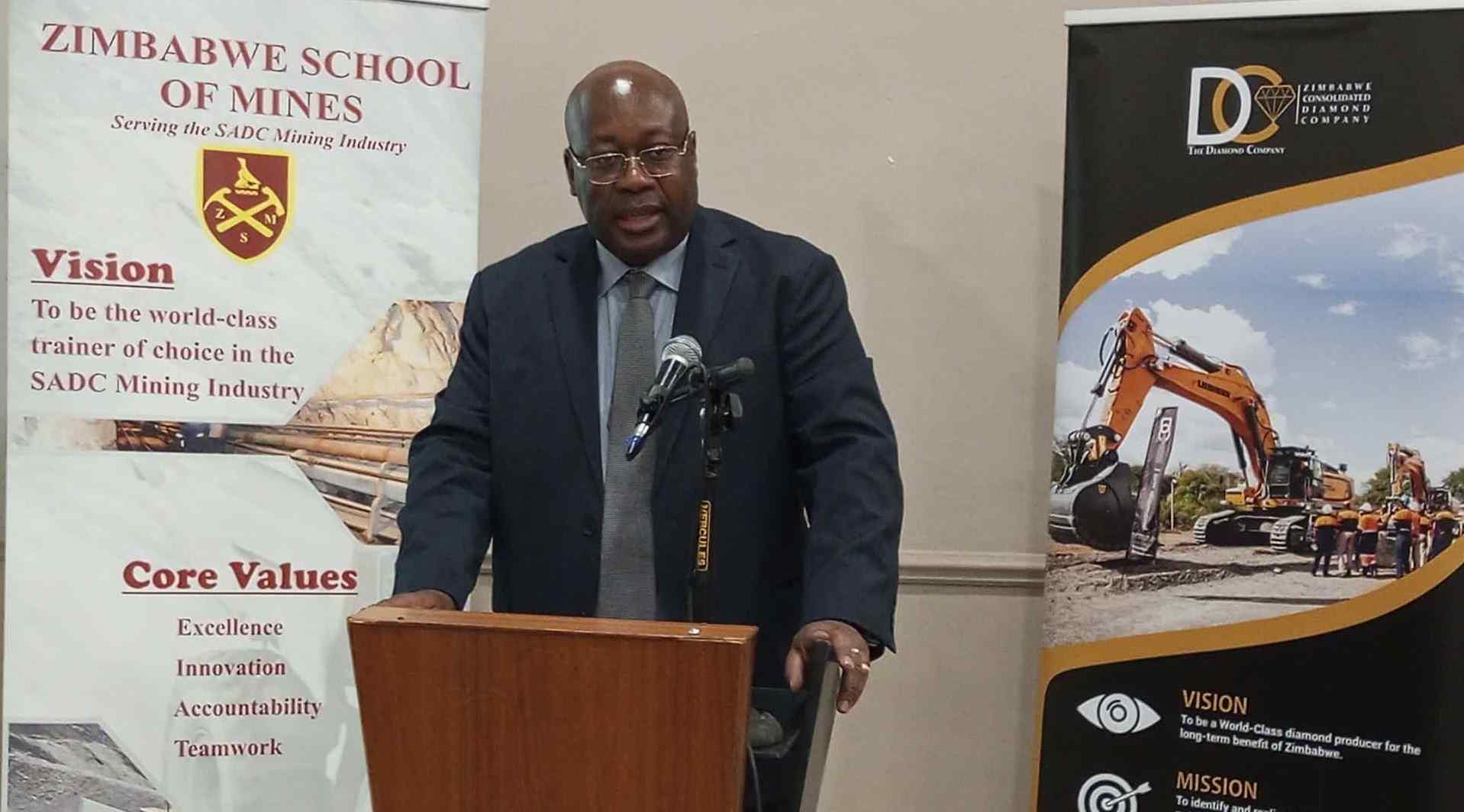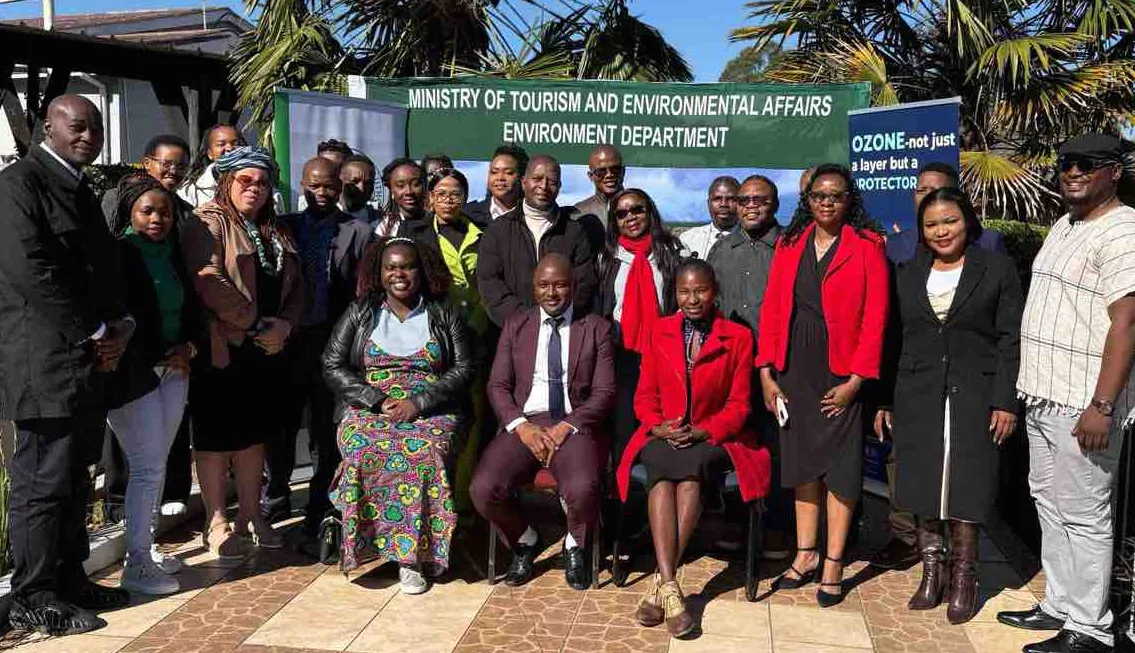|
Getting your Trinity Audio player ready...
|
Hon Winston Chitando, the Minister of Mines and Mining Development has said gemstones play an important role in aiding the mining sector to become a US$12 billion economic sector by 2023.
He made the remarks in his speech during the meeting on the contribution of gemstones to the development of the mining sector held today in Harare.
“It is estimated that gemstones and semi-precious minerals in Zimbabwe are valued at 2 billion yet the country has not fully benefitted from these resources. The gemstone industry worldwide was valued at 30 billion in 2022 and is projected to grow to 52 billion by 2032. The sector is growing. Not many countries are blessed to have geological gemstones but Zimbabwe is blessed to have this very good mineral occurrence.
” We need to discuss ways to make sure the gemstone sector is properly positioned for optimum extraction and value addition of gemstones. From a 2030 perspective, Zimbabwe should become an upper-middle-income economy. The thrust is to grow production. Hence as part of our contribution as an industry, we want to grow the mining industry to a US$12 billion sector by 2023 with the gemstone industry contribution of at least US$1 billion,” Hon Chitando said.
He said huge strides have been made in terms of growing the diamond industry. There is a significant increase in the production of diamonds from 1, 8 million in 2018 to 4 million carats last year.
Minister Chitando urged stakeholders to come up with a roadmap for gemstones and alluded to the ZCDC and Aurex partnership in the value-addition initiative.
He encouraged the growth of skills so that Zimbabwe positions itself for optimum extraction and value addition. In that regard, he said training should create a framework to ensure the success of a vibrant gemstone industry.
Hon Chitandu lauded the significant role of small-scale miners in increasing the production capacity of gemstones. He said the Zimbabwe School of Mines offers the requisite skills to make our gemstones compete with those from countries like India and the US.
Over and above the training, Hon Chitando said there is a need to come up with a gemstone development policy as evidenced by the process of amending the Mines and Minerals Act. There is consultation and roll-out of amendments to come up with a Bill from Parliament but some legal policy interventions are required.
Speaking at the same occasion, Henrietta Rushwaya, the President of the Zimbabwe Miners Federation said gemstones have been prized as representatives of beauty and status.
“It is estimated that gemstones and semi-precious in Zimbabwe are valued at US2 billion yet the country has not fully benefitted from these resources. The Minerals Marketing Corporation of Zimbabwe (MMCZ) only recorded $400,000 from semi-precious sales in 2021. Artisanal and small-scale miners (ASM) dominate the mining of gemstones and coloured stones in Zimbabwe.
“Semi-precious stones are being discovered in some parts of the country like Karoi, and Hurungwe and have been done informally and consequently, lots of revenue have been lost to illicit trade thus disenfranchising the country the much-needed gemstone revenue as individuals have been selling to cartels,” Rushwaya said.
There are stakeholder efforts to formalize the sector. The key stakeholders are the ZMF, MMCZ, and the Ministry of Mines and Mining Development.
The Statutory Instrument (SI) 256 of 2019 initiated the formation of the National Gemstones Miners Association requiring the other existing associations to report their activities to it. Other District Associations were formed through education and awareness campaigns.
“However, full beneficiation is hampered by a number of factors. These include the widespread illegal activities where many miners and traders operate outside the formal sector like what is happening in Hurungwe and Karoi. This has resulted in low revenue collection; underreporting and undervaluation of production by the government. On the other hand, miners have complained of MMCZ undervaluing the gemstones.
“Such a move, according to the miners, consequently promotes illicit trade of the gemstones. While the cutting, polishing, and processing of gemstones by manufacturers into jewelry is in existence, only a small fraction sees the significance of this activity,” Rushwaya said.
If managed appropriately, natural resources will benefit citizens and contribute to the fiscus including supporting employment. The government is therefore urged to design laws, policies, and practices that support and enhance gemstone mining.
The ASM continues to play a pivotal role in the mining of gemstones and coloured stones. The only way for the government to fully realize the significance and potential of this sector is to formalize them and put them in the mainstream economy.






